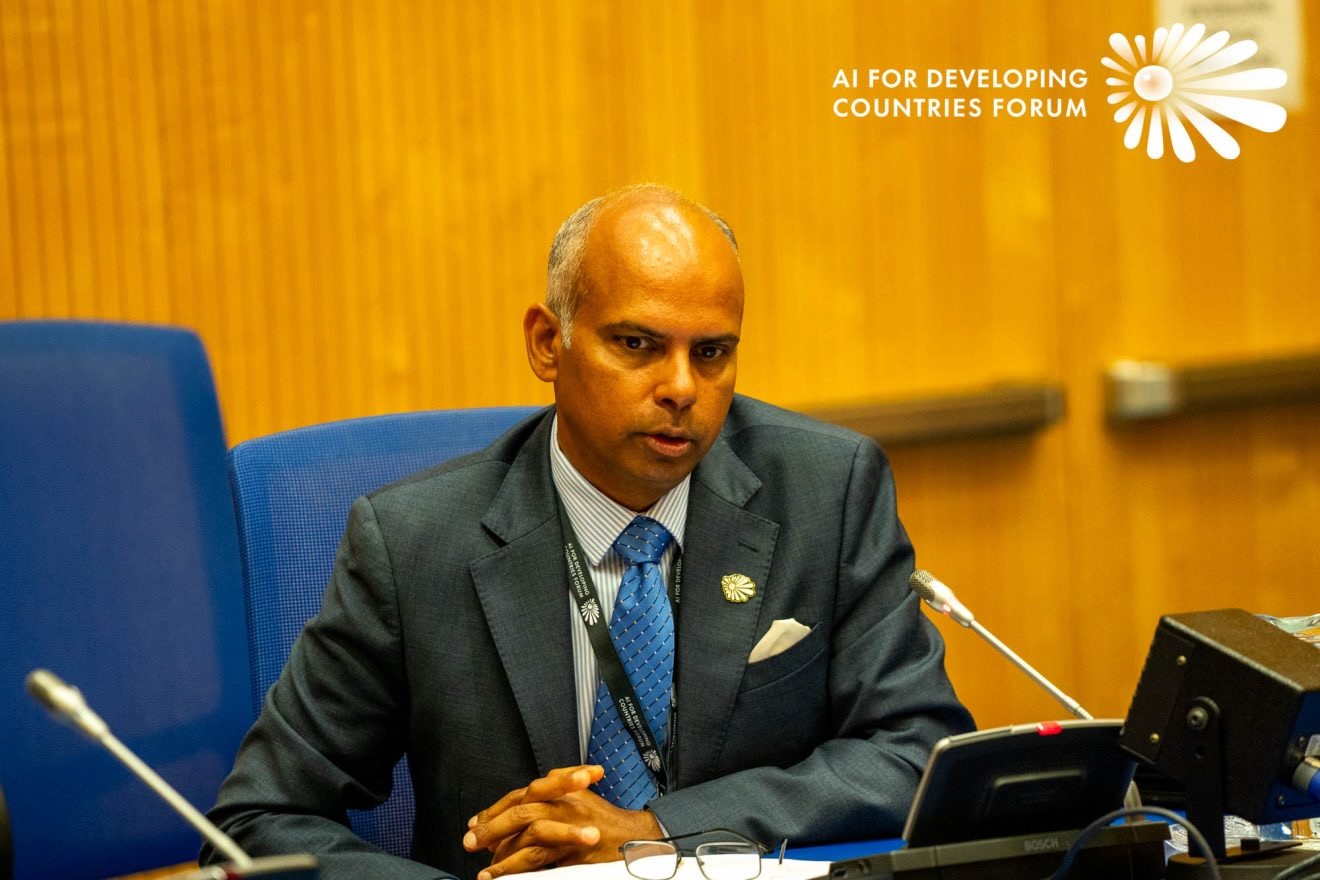Building An AI Culture: Shaping Your Responsible AI Roadmap

An AI-first strategy starts with culture. As I wrote about previously, a successful pivot to embrace an AI-first strategy is one that strives to empower people to do their best work, creates the blueprint for strategic growth and operates within a framework of ethics and compliance.
The legendary founder and CEO Morris Chang of TSMC famously said, “Without strategy, execution is aimless. Without execution, strategy is useless.” But in my experience, this sentiment needs to go one step further because, without culture, everything is pointless.
Culture enables transformation.
Transformation is fueled by AI.
And AI needs culture.
Think of it like a three-legged stool-the elements are so carefully balanced that if you take one leg away, the whole thing is likely to collapse.
Fostering an AI culture is a crucial foundational step on which to grow your future success. According to 2018 research from Boston Consulting Group (BCG), organizations that focused on culture were five times more likely to achieve breakthrough performance in transformation when compared to organizations that neglected culture. But the challenge remains that as a still relatively unknown technology, the mere mention of “AI” can breed nervousness in an organization.
So, how do you start to create a culture that enables transformation and fuels AI?
Start by addressing AI literacy.
Despite the explosion in generative AI over the last year, 2023 data from BCG shows just 14% of frontline employees have received training on it. When you invest in cultivating AI literacy in the workplace, it breeds confidence in employees because they know how to adapt to the new tools, systems and processes, which are all essential to delivering AI strategy.
Furthermore, once literate, employees become attuned to spot the opportunities and risks that AI presents so they can act sooner. When coupled with a “fail-fast” mentality, where employees are encouraged to experiment, it can lead to a first-mover advantage to keep organizations one step ahead of their competitors.
Create the right organizational structure to foster AI trust.
In my experience, the number one factor that underpins culture is trust. But despite all the benefits AI has to offer, many employees are still wary about fully engaging with the technology. Research from KPMG suggests this lack of trust is largely due to a lack of education, with 85% of employees actively wanting to learn more about AI.
As stated at the beginning, an AI-first strategy seeks to empower people. Within the context of culture, we need to help employees overcome their cognitive dissonance-the internal struggle we feel when we’re asked to do something that doesn’t align with our personal beliefs.
Through training programs, employees can be educated to have a clear understanding of what AI is, what it can/can’t do and how it could support them day-to-day. Then, through incentive and recognition platforms, employees can be rewarded for demonstrating the right behaviors, like open-mindedness, experimentation and continuous learning.
Understand the value chain to identify where the AI interplay happens.
The data value chain describes the process from data creation through to using data to generate value-and its possible reuse. By understanding the end-to-end value chain, it’s possible to identify where AI can improve and optimize both the customer and employee experiences.
AI exists to support, rather than replace employees. And industry estimates show nearly three-quarters of manual tasks could be automated with AI, which frees people to work on more strategic tasks or innovations that result in greater value. According to McKinsey, the productivity gains realized through AI automation alone could total $4.4 trillion annually.
Promote ethical, responsible AI implementation.
Responsible AI implementation requires several factors to come together in a unified response.
- Regulatory compliance: Ensure the AI model and outputs adhere to relevant legislation, such as the EU AI Act; U.S. state regulation, such as the Illinois Biometric Information Privacy Act, New York AI Bias Law and Colorado Artificial Intelligence Act; Canada’s AI and Data Act; and China’s Administrative Measures for Generative AI Service.
- Ethical considerations: Historical data sets are inherently biased, which AI will propagate if it’s not properly accounted for. Additionally, because some generative AI tools are programmed for plausibility over accuracy, they are known to suffer hallucinations. Therefore, all AI outputs should be checked and verified to prevent the spread of misinformation.
- Explainability: Employees and customers want to understand why AI tools reached a particular decision, made a certain recommendation or predicted an outcome. This means being able to trace the output back to its origins-knowing what data sets were used and how the prompt was crafted, as well as the guidelines that constrain how the AI tool operates.
- Diversity and inclusion: Within any team, diversity of thought is essential to ensure you’ve considered a problem or opportunity from multiple perspectives. The same is true with AI. The more diverse a team, the greater chance there is that people will identify, understand and correct underlying biases, which results in more equitable and inclusive AI outcomes.
AI transformation depends on the right cultural framework.
Technology is just one critical success factor during business transformation. Equal importance is finding and developing the right people within the right cultural framework who can use AI to drive successful transformation.
AI won’t change your organizational culture, but if you lack a strong cultural foundation, it can derail an AI implementation. Therefore, to ensure your business is change-ready, shine a spotlight on your existing culture and identify areas for improvement before embarking on your AI-first strategy.
The views and opinions expressed in this publication are entirely those of the author and do not necessarily represent the views of any company, board, or institution with which the author is associated.
This article by Partha Gopalakrishnan was first published on forbes.com by Forbes Business Council on Aug 16, 2024.
Read More

Perspectives from the United Nations – Financing Fairness and Building Trust with AI

Perspectives from AIFOD Winter Edition at the United Nations

Do You Need A Strategic Pivot To Get AI Right?


